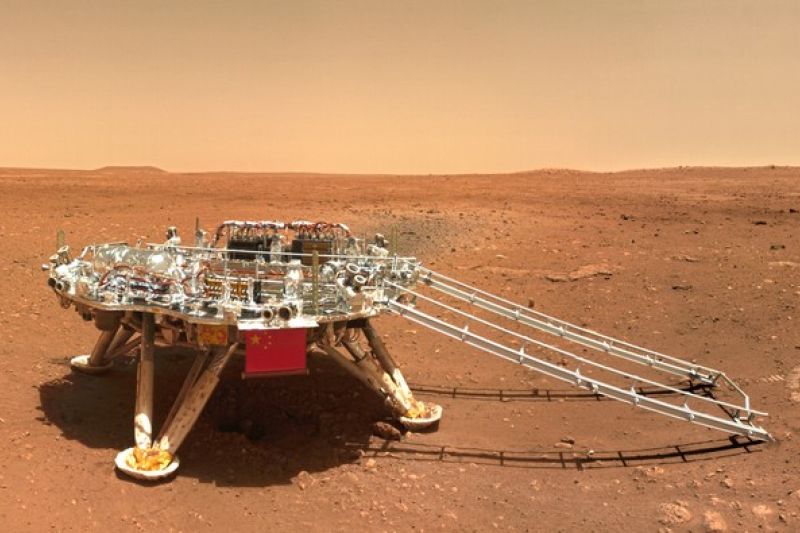… the discovery could provide more new insights into the history of the planet’s surface and the evolution of the northern lowlands on Mars
Jakarta (ANTARA) – A new study provides more evidence on the Red Planet’s surface features after revealing that the site where China’s Mars Zhurong rover landed experienced wind and possible water erosion.
The study, published in the journal Nature Geoscience this week, analyzed data collected by Zhurong during the first 60 days of exploring Mars. During this period the rover traveled about 450 meters.
A research team led by Ding Liang of the Harbin Institute of Technology in northeastern China found that Martian soil has high bearing capacity and evidence of wind erosion cohesion after studying the surface rocks imaged by the probe’s camera.
They also identified a number of landscapes such as ridges, ripples and eroded craters, indicating that the site was weathered by wind over a long period of time.
In addition to wind erosion, the researchers also observed several rock textures that appear to be evidence of interactions with saltwater.
Zhurong landed on Utopia Planitia, a vast plain in the northern hemisphere of Mars on May 15, 2021. Since then, the Chinese probe has been collecting surface rock samples and capturing images as it explores the planet.
Some scientists believe that the Utopia Plain is a volcanic area with an estimated surface age of more than 3 billion years. The area may have harbored large amounts of liquid water or ice in the past.
According to the researchers, the discovery could provide more new insights into the history of the planet’s surface and the evolution of the northern lowlands on Mars.
Reporter: Xinhua
Editor: Virna P Setyorini
COPYRIGHT © ANTARA 2022
–


